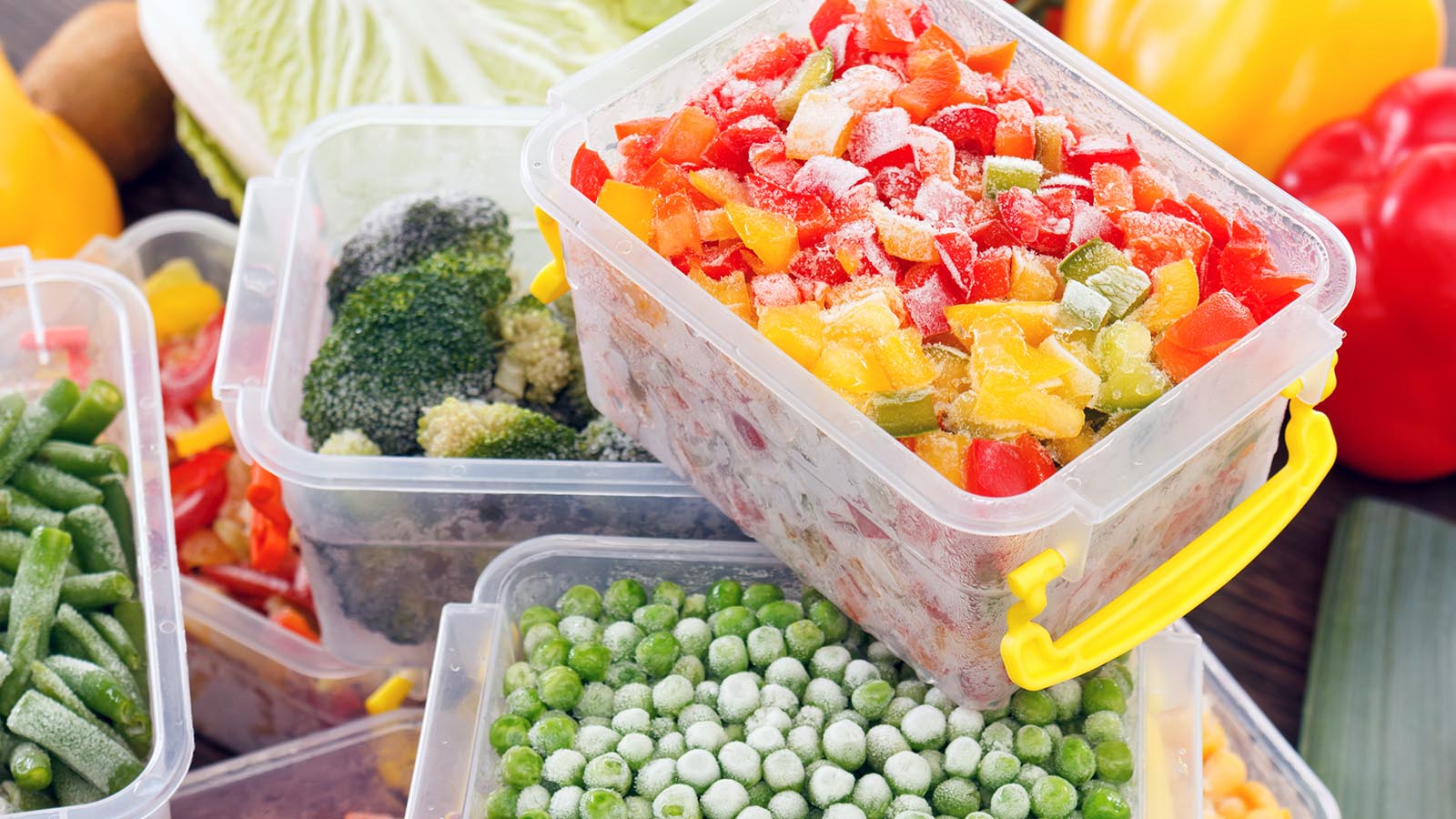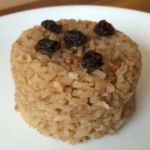Vegetables are essential foods for a balanced diet, since their components nourish the body and, in turn, protect it from most diseases, particularly those of a metabolic and cardiovascular nature. In addition, these foods offer many possibilities in the kitchen, since you can include them in endless ways in your meals, thus enriching your recipes.
 However, when it comes to buying fresh vegetables, perhaps we limit ourselves in quantity because we don’t have time to cook and/or they seem complicated to prepare, so in the end we think that they will be lost and we buy very few. On the contrary, it is possible that we have bought more than necessary and we do not know how to preserve the vegetables. In any case, don’t worry, here we bring you the solution so you don’t miss out on seasonal offers, save time and money, stock up very well, take care of your health and exploit your culinary creativity: freeze your vegetables at home. We invite you to continue reading and find out about many easy tricks that will make your life easier and will teach you how to freeze vegetables.
However, when it comes to buying fresh vegetables, perhaps we limit ourselves in quantity because we don’t have time to cook and/or they seem complicated to prepare, so in the end we think that they will be lost and we buy very few. On the contrary, it is possible that we have bought more than necessary and we do not know how to preserve the vegetables. In any case, don’t worry, here we bring you the solution so you don’t miss out on seasonal offers, save time and money, stock up very well, take care of your health and exploit your culinary creativity: freeze your vegetables at home. We invite you to continue reading and find out about many easy tricks that will make your life easier and will teach you how to freeze vegetables.
How to freeze vegetables correctly?
Although each type of vegetable has its particularities, when freezing them there are some general guidelines that are useful for any case:
- Buy good quality products. The success of the freezing process depends largely on the quality of the food, which is defined as follows: ideal point of maturation, freshness, healthy appearance and without abuse, among other characteristics.
- Wash your hands. Before starting work and whenever necessary, wash your hands. Do it thoroughly and for 20 minutes.
- Thoroughly wash the vegetables. Clean them very well and disinfect them before preparing them for freezing (an almost essential step in any conservation process). Do it according to its characteristics: tubers, cruciferous vegetables, green leafy vegetables, soft-skinned vegetables, etc. Use a special brush for each type of vegetable and a natural antiseptic. You must do this without mistreating the vegetable; just remove any remaining dirt or other dirt. Check our article on How to disinfect vegetables.
- Blanch or blanch. Although you can freeze a wide variety of vegetables without any prior treatment, these two techniques protect the essential characteristics of the food and its nutrients. In addition, they prolong its freshness and soften its flavor.
- Drain and dry the vegetables very well. Any excess moisture forms crystals in the food, causing the loss of its organoleptic characteristics (flavor, aroma, texture, etc.) and its nutrients. That is, it accelerates the process of degeneration or aging.
- Purchase plastic containers or special plastic bags. Use products that withstand low temperatures, so you will have a good packaging and a successful final result: you will isolate the product from the direct air of the freezer and any external agent.
- Create a void. This is the best way to store frozen vegetables and other foods at home. To achieve this, it is best to use special resalable plastic freezer bags. The procedure is simple: remove all the air from the bag by crushing it where there is no food and close hermetically (something very similar to a vacuum). The effect will never be as effective as the one used at an industrial level, but it works quite well (later we will show you another more precise and also homemade one).
- Label the bags or containers. Once the food has been stored correctly, enter your data: name and date of packaging. This way you will have control and you will know until when you can consume it.
- Divide the vegetables into several portions. Distribute the food in several parts, each part in a bag. Calculate the portion for each person in the house or the portion of a meal for everyone. This way you avoid defrosting more vegetables, since freezing them again is not a recommended option.
Can raw vegetables be frozen?
Yes, we can freeze most raw vegetables out there. However, we must consider certain aspects and exceptions before starting to apply this technique:
- A raw frozen vegetable, as soon as it thaws, will rapidly begin to age. This will happen much faster than a blanched or blanched (precooked) vegetable. That is, it will quickly lose its organoleptic characteristics and nutrients.
- Frozen vegetables (whether raw or processed) work great in stews, soups, cooked salads, sauces, and many other cooked preparations. However, they are not suitable for raw preparations, such as most salads, some soups, some sauces, and other recipes.
- There are foods that are not recommended to be frozen raw, under any circumstances, due to their high water content, such as celery, lettuce, cucumber, potatoes, etc. These types of vegetables create ice crystals during freezing, which, when thawed, degrade all the essential characteristics (aroma, taste, color, etc.) of these vegetables and favor the loss of their nutrients.
So can you freeze raw vegetables? Yes, but keep in mind that they will not be eaten raw.
Tip: The only way to freeze potatoes at home is by mashing them.
How to freeze fresh vegetables?
Although blanching or blanching is always recommended to better preserve vegetables, many vegetables can be frozen without the need for these previous treatments, such as garlic, onion, peas, Swiss chard, parsley or broad beans.
However, all home-frozen foods, once thawed, suffer a much accelerated degeneration (lose color, flavor, aroma, texture, etc.), especially if they are not previously treated (blanched or blanched). For this reason, whether they are fresh frozen vegetables or cooked (precooked or processed) frozen vegetables, it is advisable to consume them immediately and not to freeze them again.
You should also consider that there is a group of foods that you should never freeze fresh: lettuce, cucumber, celery and potato. These products contain a lot of water, which, when melted, produces a great deterioration in the vegetable.
For the remaining vegetables, follow these steps to learn how to freeze fresh vegetables at home:
- Choose healthy vegetables and at their ideal ripening point.
- Wash your hands and vegetables very well. Always take into account the type of vegetables before washing them, but in general, soak them in a solution of water and some antiseptic for 10-20 minutes. This disinfects and loosens the earth or any dirt. Then, take them to the sink and rub them under the tap water with a special brush (depending on the skin of the vegetable) or wash them with your hands. Finally, rinse with plenty of water.
- Drain them and dry them very well. Pass the vegetables through a strainer and then dry them very well with paper towels. Remember that there should be no traces of moisture.
- Remove the skin or any shell, if any, and discard.
- Cut vegetables before freezing. Chop them as you prefer: in squares or cubes, brunoised, in strips (julienne), in slices (slices) or grated. If it’s peas or beans, leave them whole. Dry them again.
- Distribute the vegetables in several portions. In each bag place a portion; the quantity will be according to your needs.
- Use plastic containers or resalable freezer bags. These products must be suitable for the freezer.
- If you use bags, squeeze the air out of them and close them tightly. As you put the vegetable pieces inside the bag, flatten the empty areas and close the package.
- Although you can freeze the vegetables directly in the bag without any problem, if you apply this trick we guarantee a better result, since this prevents the pieces of vegetables from sticking together. If you have pieces cut into cubes or slices (if they are grated no, store them as usual), put them in a bag, separated from each other (not touching each other) and freeze for 3-4 hours. Once frozen, remove the pieces, store them in another bag (better two bags, one inside the other) and return them to the freezer. You can apply this trick to fresh or cooked frozen vegetables.
- Identify the bags or containers. Label them with the following information: name of the food and date of packaging.
- Store them in the freezer leaving space between them. It is important that cold air circulates between the bags.
- To thaw fresh vegetables, place frozen items in the refrigerator. Leave the bag there until it slowly thaws. Garlic and onions do not need to be defrosted to use them, but be careful if you put them in very hot oil because you can burn yourself if it splashes.
How to freeze cooked vegetables?
When we refer to freezing cooked vegetables, we are talking about vegetables that have been precooked or treated with a previous process called blanching (they can also be blanched). This culinary technique consists of cooking food for very short minutes, in boiling water or with steam. Its purpose is to stop the action of the enzymes that cause the degeneration or aging of the food (those that alter its color, flavor, texture and its nutrients). Freezing cooked vegetables is very easy; you just need to be guided by the following recommendations:
- Buy good quality vegetables.
- Wash the vegetables very well. As you know, conservation techniques require a lot of neatness. Clean your hands first and then proceed to disinfect the vegetables.
- Once clean, cut them as you prefer. The style will depend on your taste and culinary needs: squares or cubes, brunoised, long strips (julienne), sliced, grated, and coarsely chopped, among others.
- Blanch the vegetables. There are many ways to blanch food, but at home we are interested in two: in boiling water(in a saucepan, a bain-marie or in a pressure cooker) or steamed (using a steamer or strainer). The grated pieces are steamed for 2-3 minutes (depending on the thickness) and cover the pot. Instead, diced, sliced, and other pieces are immersed in boiling water and cooked uncovered. In this case, the time depends on the texture of the vegetable and the dimension of the cut (i.e. its thickness and size). For example, large and/or thick pieces of zucchini need 3-4 minutes and carrots 4-5 minutes. But small parts, in any case, need only 2 minutes. This guide is for reference, since there is a more precise time table for vegetables.
- Submerge cooked vegetables in cold water. To stop the scalding process, as soon as the necessary time has elapsed, you should quickly drain the pieces of vegetables; empty them in a bowl with a lot of ice and plenty of cold water. Leave them there for 1-3 minutes. Another method would be a reverse water bath.
- Drain again and dry very well. Pass the vegetables through a strainer and dry them with absorbent paper towels. There should be no visible trace of moisture.
- Divide them into portions. These portions distribute them in several bags or containers, equivalent to your daily consumption needs (per person or per meal).
- If you use a bag, remove the air. Plastic bags designed for freezing are the best option to perform something similar to a vacuum and freeze cooked vegetables correctly. Some people use two bags, putting one inside the other. Next step, they put the pieces of vegetables in the bag. Finally, they remove all the contained air, close it and put it to freeze.
- Label packages or containers.
- Arrange the bags in the freezer leaving space between them.
- To thaw cooked vegetables, leave the bag in the fridge until they gradually thaw. Never use hot water or leave them at room temperature, because if you speed up the defrosting process, the food will lose its crisp texture.
Tip: Don’t add salt to the water.
How to freeze green leafy vegetables?
Vegetables like Swiss chard, kale, spinach, and others can be safely frozen fresh or pre-cooked. However, green leafy vegetables that contain a lot of water should never be frozen fresh. With that said, let’s go through step by step how to freeze green leafy vegetables:
- Buy good quality vegetables. Especially in this type of vegetables, you should check that they are in good condition and without obvious abuse, since they are very delicate.
- Clean your hands.
- Strip the vegetables. Do it very carefully, the leaves must remain intact.
- Remove bad leaves. In the case of Swiss chard, check the stem as well.
- Thoroughly wash each leaf. Prepare an antiseptic solution by mixing water with some natural germicide (lemon, vinegar, baking soda, salt, etc.) in a large, deep bowl. Dip the leaves in there, let them sit for 10-20 minutes (use less time if you plan on scalding), then gently rub them in with your fingers.
- Cut the leaves in half, into strips or leave them whole. If the leaves are not very large, preferably leave them whole (you can use larger bags). But if you prefer to cut them, use your hands or a plastic knife.
- Blanch the vegetables. Fill a saucepan with water (2/3) and bring it to a boil. During the boiling process, add the leaves. Cook for 2 minutes without covering the pot. Remember that if you prefer to freeze green leafy vegetables directly, that is, without blanching the leaves, you can do so, you just have to skip this step (however, this treatment is always the most advisable due to all its advantages).
- Stop the cooking with cold water and ice. Fill a bowl with cold water and lots of ice, drain the leaves and plunge them into it. You can also use a reverse water bath.
- Drain the leaves and dry them very well. Pass them through a strainer and help yourself a little with your hands, squeezing them carefully, so they will lose more moisture. Once well drained, dry them with absorbent paper. They must be well dry, without mistreating them.
- Use a suitable container to freeze vegetables.
- Arrange the pieces of vegetables in portions and distribute them in several bags or containers. It is important to consider that once a food is thawed, it is not recommended to freeze it again. For this reason, this step is very practical and advisable.
- Pull all the air out of the bag, creating a homemade vacuum. If you use bags, this trick will be very useful and you will not need a special machine for it. Once you have the pieces of vegetables inside the bag, pass your hand through the closure (zipper) but do not reach the end, leave a small open space. Immerse the bag in a bowl of warm water, little by little and very carefully, until almost everything remains in the water, except for the zipper. Help yourself with your fingers to push the bag into the water. It is important that under no circumstances does any liquid enter the bag, not even a drop. Once the vacuum is made, dry the bag on the outside and freeze the food.
- Identifies the container or bag.
- Sort the bags in the freezer separate from each other.
- To defrost, lower the package or recent that you will consume to the refrigerator. Wait until it thaws before taking it out of the fridge.
- Another alternative: green leafy vegetable ice cubes. Some people prepare a juice with 1 cup of water and 6 cups of the vegetable (it should be very thick but without chunks, well crushed), pour it into a preferably silicone container and freeze it. Once frozen, they unmold it, store the cubes in a zippered bag and take it to the freezer. This method is ideal for preparing green smoothies or sauces.
How long do frozen vegetables last?
Most frozen vegetables keep good for 8-12 months. However, this will also depend on two factors: a good process prior to freezing and proper storage.
In summary, we recommend freezing cooked vegetables, in special freezer bags and vacuum-sealed, as we have explained in previous sections. Without a doubt, this is the best method to preserve vegetables at home. Likewise, this method and all the previous ones work for any type of vegetable, so you can freeze peppers, freeze zucchini, freeze carrots, freeze green beans or freeze cabbage.



